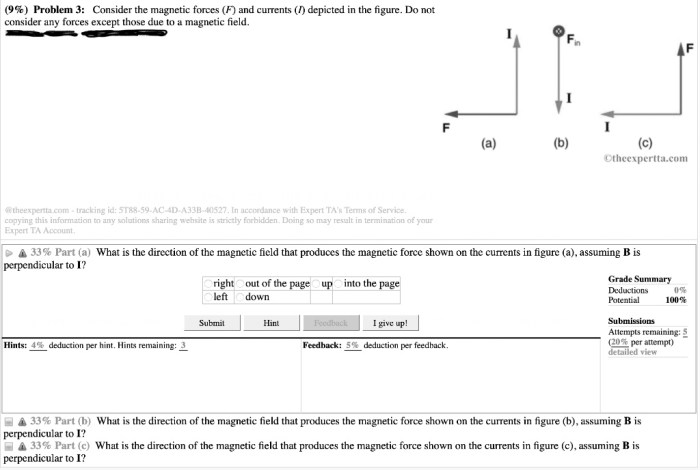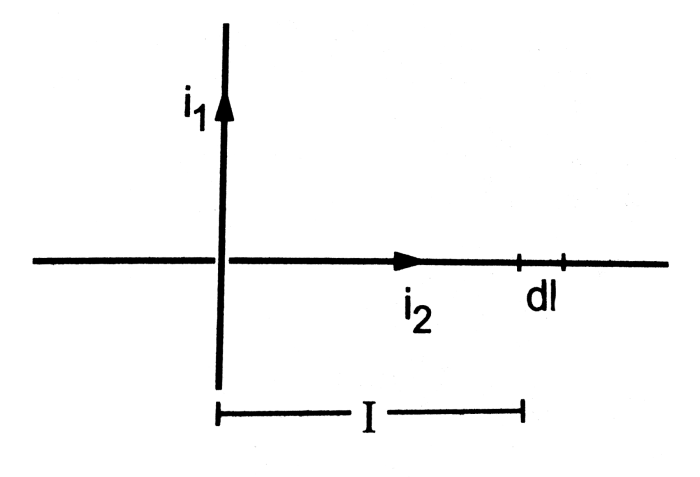Consider the magnetic fields and currents depicted in the figure. These seemingly abstract entities hold the key to unlocking the mysteries of electromagnetism, a fundamental force that shapes our world. By delving into the direction, strength, and interactions of these fields, we embark on a captivating journey that reveals the intricate dance of energy and matter.
The interplay between magnetic fields and currents is a cornerstone of modern technology, from the humble electric motor to the cutting-edge MRI scanner. Understanding these concepts is essential for unraveling the complexities of our physical universe and harnessing its power for practical applications.
Magnetic Field Direction

The direction of magnetic fields is determined by the direction of the current flow that creates them. According to the right-hand rule, if you point your right thumb in the direction of the current flow, your fingers will curl in the direction of the magnetic field.
In the figure, the current flows in a clockwise direction, so the magnetic field points upward.
Factors Influencing Magnetic Field Direction, Consider the magnetic fields and currents depicted in the figure.
- Current flow direction
- Shape of the current-carrying conductor
- Presence of other magnetic fields
Current Flow Direction: Consider The Magnetic Fields And Currents Depicted In The Figure.

The direction of current flow is determined by the direction of the electric field that drives it. According to the conventional current model, current flows from the positive terminal of a battery to the negative terminal.
In the figure, the current flows in a clockwise direction because the positive terminal of the battery is connected to the top of the coil and the negative terminal is connected to the bottom.
Relationship between Magnetic Fields and Current Flow
Magnetic fields are created by moving electric charges. When current flows through a conductor, the moving electrons create a magnetic field.
The strength and direction of the magnetic field are directly proportional to the strength and direction of the current flow.
Magnetic Field Strength
The strength of a magnetic field is measured in teslas (T). The strength of a magnetic field is determined by the following factors:
- Current strength
- Number of turns in the coil
- Shape of the coil
- Presence of other magnetic fields
In the figure, the magnetic field is strongest at the center of the coil and weakest at the edges.
Magnetic Field Interactions

When two or more magnetic fields interact, they can either reinforce or cancel each other out.
In the figure, the magnetic fields from the two coils interact to create a stronger magnetic field at the center of the coils.
Effects of Magnetic Field Interactions
- Increased magnetic field strength
- Decreased magnetic field strength
- Change in magnetic field direction
Real-World Applications

The concepts of magnetic fields and currents are used in a wide variety of real-world applications, including:
- Electric motors
- Generators
- Transformers
- MRI machines
- Loudspeakers
Understanding these concepts is essential for designing and operating these devices.
Essential FAQs
What factors influence the direction of magnetic fields?
The direction of magnetic fields is primarily determined by the direction of current flow and the geometry of the current-carrying conductors.
How is the strength of magnetic fields affected?
The strength of magnetic fields is influenced by the magnitude of the current, the distance from the current-carrying conductor, and the magnetic permeability of the surrounding medium.
What are some real-world applications of the principles depicted in the figure?
These principles find application in electric motors, generators, transformers, MRI scanners, and countless other devices that rely on the interaction of magnetic fields and currents.